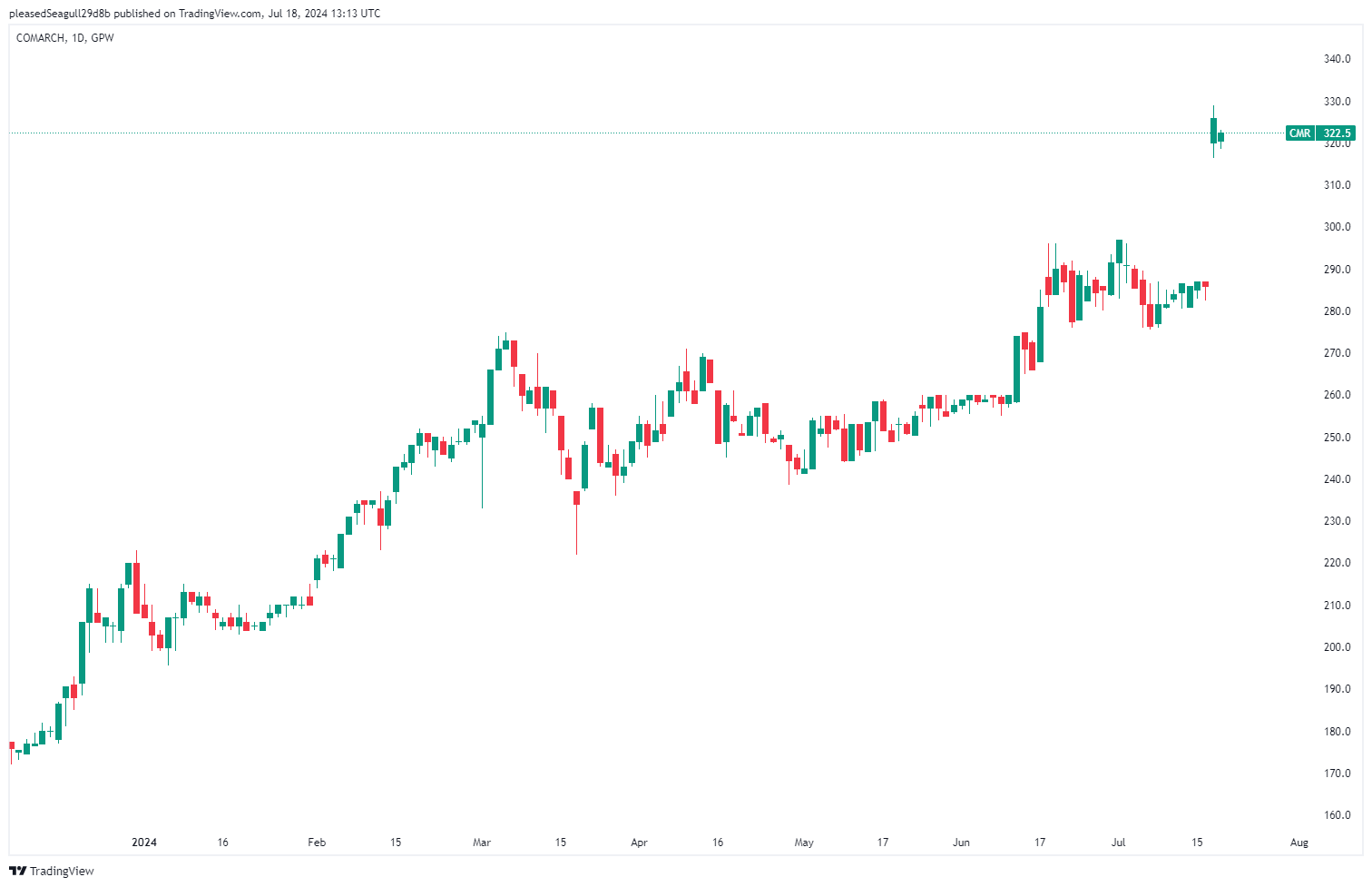In today's dynamic and often unpredictable economic environment, more and more companies are choosing to delist their shares. This process, known as delisting, can be dictated by a variety of factors - from strategic management changes to financial reorganisation to a desire to avoid costs and formal requirements. While going public is often seen as a step towards greater transparency and prestige, leaving the stock market can bring companies a number of benefits that outweigh the potential losses. We will look at the main reasons why companies choose to take this step and examples.
Table of contents:
Acquisition or merger transactions
Currently a high-profile case on the Polish stock market is the planned withdrawal of Comarch. The Luxembourg private equity fund CVC Capital Partners, through its company Aspa sp. z o.o., is planning to buy 100 per cent of the company's shares. This fund is known for its high-profile acquisition of the Żabka Polska chain. The reason companies are taken out of the public market is mainly due to mergers and acquisitions, as acquiring companies see great potential in their targets, which seems to be the case with CVC. When a company is acquired by another company, it is often pulled off the stock market, thus becoming a private company.

Source: Tradingview
Going private
Another reason may be the buy-back of shares by the current owners, known as going private, which enables them to reduce the administrative costs of being a listed company and to comply with information requirements that can be used by competitors. The owners of the company may choose to buy back all the shares from investors and turn the company into a private entity.
An unpalatable reason for investors, but one that is quite often observed on the Polish market, may, however, be the withdrawal of a company when its current capitalisation is significantly undervalued in relation to its assets. An example would be a situation where the value of the assets is $1 and they can be acquired for 40 cents. A similar, albeit more legally complicated, situation is currently being observed by investors in Kernel Holding, which operates in Ukraine.

Source: Tradingview
Hostile takeover
A common reason for companies to delist from the US stock market until some time ago were so-called hostile takeovers, i.e. situations where companies were acquired by competitors in the same industry or even by their own managements. Because there are few restrictions on the purchase of shares of public companies in regulated markets, both independent investors and competitors can purchase their shares. When a significant proportion of a company's shares are publicly traded, as is the case with many US companies, there is a risk that they may be acquired by competitors, who may thus take control of the company.
One of the more famous examples of a hostile takeover is the situation with RJR Nabisco in 1988. The story became the canon of the film ‘Barbarians at the Gate’. RJR Nabisco. The conglomerate formed by the merger of tobacco company R.J. Reynolds Tobacco Company and food company Nabisco was the target of a management buyout (MBO) announced by chairman Ross Johnson. Johnson's plans attracted the attention of a number of investors, setting off an intense bidding battle. This acquisition, which was the largest leveraged buyout (LBO) in history, also became a symbol of the aggressive takeovers of the 1980s.
Grzegorz Dróżdż, CAI MPW, Market Analyst of Conotoxia Ltd. (Conotoxia investment service)
The above trade publication does not constitute an investment recommendation or information recommending or suggesting an investment strategy within the meaning of Regulation (EU) No. 596/2014 of April 16, 2014. It has been prepared for informational purposes and should not form the basis for investment decisions. Neither the author of the publication nor Conotoxia Ltd. shall be liable for investment decisions made on the basis of the information contained herein. Copying or reproducing this publication without written permission from Conotoxia Ltd. is prohibited. Past performance is not a reliable indicator of future results.
CFDs are complex instruments and come with a high risk of losing money rapidly due to leverage. 79,03% of retail investor accounts lose money when trading CFDs with this provider. You should consider whether you understand how CFDs work and whether you can afford to take the high risk of losing your money.







